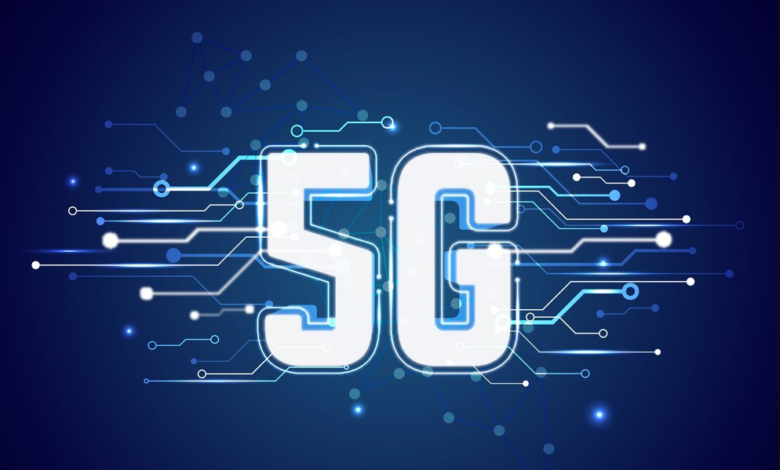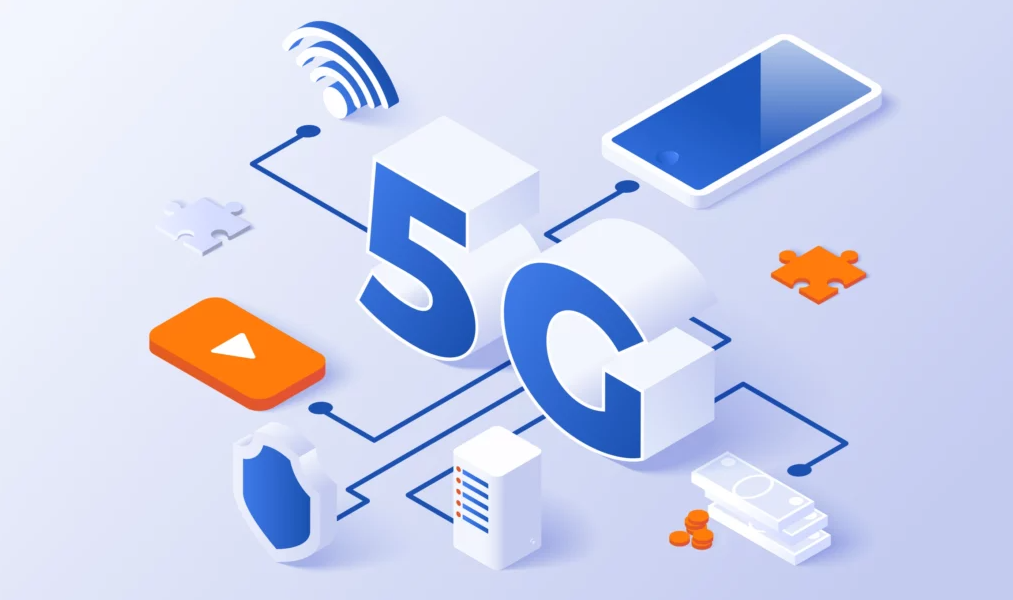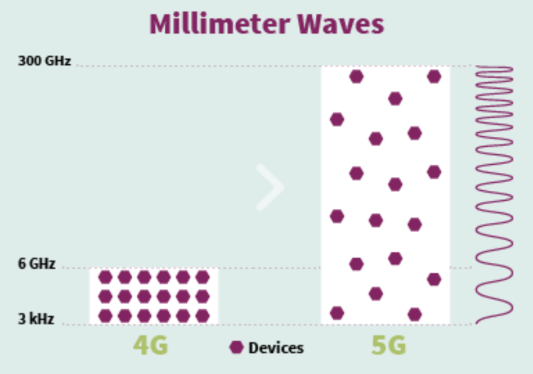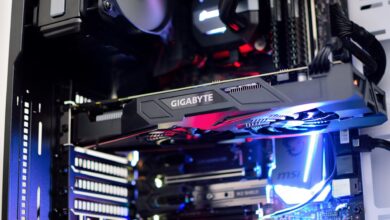What is 5G: Understanding the Technology

Imagine a future where connectivity is seamless, instantaneous, and omnipresent. 5G is not just a technological evolution but a paradigm shift that promises to revolutionize our digital lives. This cutting-edge technology offers unprecedented speed, ultra-low latency, and the capacity to connect millions of devices simultaneously. Envision streaming high-definition content without a hint of buffering or smart cities with flawlessly interconnected systems. The transformative potential of 5G is immense, sparking curiosity and desire in both individuals and industries. Ready to embrace the future? Discover how 5G will redefine connectivity and elevate our digital experiences to new heights.
Table of Contents
What is 5G?

5G represents the fifth generation of mobile network technology, heralding a new era of connectivity. It offers remarkable improvements over its predecessors with its ultra-high speeds, reduced latency, and the ability to connect a vast number of devices simultaneously. Utilizing advanced technologies such as millimeter waves, Massive MIMO, and beamforming, 5G provides a robust and efficient network infrastructure. This innovation not only enhances mobile broadband but also supports critical applications in healthcare, autonomous driving, and smart cities, making 5G a cornerstone for future technological advancements.
Who invented 5G?
The invention of 5G is not the work of a single inventor or entity but a collective effort by numerous organizations worldwide. Telecommunications giants, technology innovators, and international standardization bodies like the International Telecommunication Union (ITU) and the 3rd Generation Partnership Project (3GPP) played pivotal roles. They collaborated to establish the technical standards and infrastructure necessary for 5G. This cooperative endeavor, involving extensive research, development, and testing, has culminated in the creation of 5G, a technology set to revolutionize global connectivity.
What are the differences between the previous generations of mobile networks and 5G?
| Feature | 1G | 2G | 3G | 4G | 5G |
| Introduction Period | 1980s | 1990s | Early 2000s | Late 2000s | Late 2010s |
| Technology | Analog Voice | Digital Voice, Text | Mobile Internet, Enhanced Data | High-Speed Internet, Streaming | Ultra-High Speed, IoT, Low Latency |
| Speed | Up to 2.4 kbps | Up to 64 kbps | Up to 2 Mbps | Up to 1 Gbps | Up to 10 Gbps |
| Latency | High | Medium | Medium | Low | Ultra-Low (Milliseconds) |
| Connected Devices | Limited | Limited | Moderate | High | Extremely High (Millions per sq. km) |
| Key Technologies | Analog Transmission | Digital Transmission, SMS | WCDMA, CDMA2000 | LTE, OFDMA | Millimeter Waves, Massive MIMO, Beamforming |
| Applications | Voice Calls | Voice, SMS | Internet Browsing, Email | Video Streaming, Online Gaming | Autonomous Vehicles, Smart Cities, Advanced Healthcare |
| Bandwidth Efficiency | Low | Low | Moderate | High | Extremely High |
How is 5G better than 4G?
| Aspect | 4G | 5G |
| Speed | Up to 1 Gbps | Up to 10 Gbps |
| Latency | Low (20-30 milliseconds) | Ultra-Low (1 millisecond) |
| Capacity | High | Extremely High |
| Connected Devices | Thousands per square kilometer | Millions per square kilometer |
| Bandwidth Efficiency | High | Extremely High |
| Technology | LTE, OFDMA | Millimeter Waves, Massive MIMO, Beamforming |
| Energy Efficiency | Moderate | High |
| Reliability | High | Ultra-High |
| Applications | High-Speed Internet, Streaming, Online Gaming | Autonomous Vehicles, Smart Cities, Advanced Healthcare, IoT |
| Network Slicing | Not Available | Available |
5G offers significantly higher speeds, up to 10 times faster than 4G, allowing for instantaneous downloads and smooth streaming of ultra-high-definition content. Its ultra-low latency of 1 millisecond enables real-time applications such as remote surgery and autonomous driving. With the capacity to connect millions of devices per square kilometer, 5G supports the vast ecosystem of the Internet of Things (IoT).
Additionally, 5G employs advanced technologies like millimeter waves, Massive MIMO, and beamforming to enhance bandwidth efficiency and network reliability. Energy efficiency is another critical advantage, making 5G more sustainable. The introduction of network slicing allows 5G networks to be divided into multiple virtual networks, each optimized for specific applications or services, further demonstrating its superiority over 4G.
How 5G affect the global economy?
- Enhanced Productivity: 5G significantly boosts productivity by enabling faster and more reliable communication. This advancement is crucial for industries such as manufacturing and logistics, where real-time data exchange and automation drive operational efficiency and reduce costs.
- New Market Development: The deployment of 5G accelerates the emergence of new markets and services. It fosters innovation in fields like the Internet of Things (IoT), autonomous vehicles, and smart cities, creating new business opportunities and driving economic expansion.
- Economic Inclusivity: 5G provides high-speed internet access to remote and underserved areas, bridging the digital divide. This inclusivity promotes equitable economic development, enabling more people and businesses to participate in the digital economy.
- Advancements in Healthcare: 5G transforms healthcare by making telemedicine and remote surgery more practical. Enhanced connectivity improves patient care, reduces healthcare costs, and supports the development of innovative medical technologies.
- Job Creation and Investment: The 5G revolution generates significant job opportunities and attracts substantial investments in technology and infrastructure. This influx of capital and employment stimulates economic growth and supports local economies.
- Increased Efficiency in Urban Management: 5G enables the development of smart cities with interconnected infrastructure. This leads to more efficient urban management, from optimized traffic flow to improved energy usage, contributing to overall economic savings and enhanced quality of life.
- Boost to Consumer Experiences: 5G enhances consumer experiences by enabling high-definition streaming, immersive augmented and virtual reality applications, and faster online services. This improvement in digital experiences drives consumer spending and stimulates the economy.
How will 5G affect me?
- Faster Internet Speeds: With 5G, you can experience internet speeds up to 10 times faster than 4G. This means quicker downloads, smoother streaming of high-definition videos, and seamless browsing, enhancing your overall digital experience.
- Reduced Latency: 5G significantly lowers latency, reducing the delay between sending and receiving data. This improvement makes online activities like gaming and video calls more responsive and enjoyable.
- Enhanced Connectivity: The advanced capabilities of 5G support a vast number of connected devices simultaneously. This results in more reliable connections for smart home devices, wearables, and other IoT gadgets.
- Improved Mobile Experiences: 5G enables new applications and services, such as augmented reality (AR) and virtual reality (VR), to function smoothly. You can explore immersive experiences and innovative apps that were previously impractical.
- Better Rural and Remote Access: 5G expands high-speed internet access to rural and underserved areas, improving connectivity in previously isolated regions. This can provide better educational and economic opportunities in these communities.
- Advancements in Healthcare: 5G facilitates telemedicine and remote health monitoring, making healthcare more accessible and efficient. This means better access to medical consultations and improved management of health conditions from the comfort of your home.
- Enhanced Smart City Benefits: In cities with 5G infrastructure, you’ll benefit from improved public services, such as optimized traffic management, better emergency response systems, and more efficient energy use, leading to an overall enhanced quality of life.
Where is 5G being used?
- Urban Areas: Major cities worldwide are at the forefront of 5G deployment, utilizing the technology to enhance connectivity, support smart city initiatives, and improve public services such as transportation, energy management, and emergency response systems.
- Industrial Hubs: Manufacturing and logistics sectors leverage 5G for real-time data analytics, automation, and the Internet of Things (IoT). This results in increased efficiency, reduced downtime, and improved production processes.
- Healthcare Facilities: Hospitals and clinics use 5G to support telemedicine, remote patient monitoring, and advanced diagnostic tools. These applications enhance patient care, streamline operations, and enable the use of innovative medical technologies.
- Educational Institutions: Schools and universities adopt 5G to facilitate remote learning, virtual classrooms, and interactive educational experiences. This technology bridges the gap between students and educational resources, promoting equitable access to education.
- Rural Areas: 5G extends high-speed internet access to rural and underserved regions, improving connectivity and fostering economic development. This expansion supports telecommuting, online education, and access to digital services in these communities.
- Entertainment Venues: 5G enhances experiences in sports stadiums, concert halls, and theme parks by providing high-speed connectivity for streaming, augmented reality (AR), and virtual reality (VR) applications, creating immersive and interactive experiences for visitors.
- Transportation Networks: 5G is being implemented in autonomous vehicles, smart traffic systems, and public transportation networks. This technology improves safety, reduces congestion, and enhances the efficiency of transportation systems.
- Retail Environments: Retailers use 5G to offer personalized shopping experiences, streamline inventory management, and enable cashless transactions. This connectivity supports innovative retail technologies, enhancing customer satisfaction and operational efficiency.
How fast is 5G?
5G is incredibly fast, offering speeds up to 10 Gbps, which is up to 100 times faster than 4G. This leap in speed allows for instantaneous downloads and seamless streaming of ultra-high-definition content. The ultra-low latency of 5G, often as low as 1 millisecond, ensures real-time responsiveness, making activities like online gaming and virtual reality applications more immersive. Additionally, it can support a vast number of simultaneous connections, facilitating the expansion of smart cities and the Internet of Things (IoT). With 5G, the digital experience is transformed, enabling unprecedented efficiency and innovation.
How does 5G work?

5G operates through a combination of advanced technologies and infrastructure improvements, creating a robust and efficient network. At its core and uses higher frequency bands known as millimeter waves, which can carry more data at faster speeds than previous generations. These waves are supported by a dense network of small cell towers and antennas, ensuring widespread coverage and high capacity.
Key technologies that enable 5G include:
- Millimeter Waves: These high-frequency waves allow for the transmission of large amounts of data over short distances, significantly increasing speed and reducing latency.
- Massive MIMO (Multiple Input Multiple Output): This technology uses multiple antennas to send and receive more data simultaneously, improving the overall capacity and efficiency of the network.
- Beamforming: This method directs data signals in focused beams towards specific users, rather than broadcasting in all directions. This enhances signal strength and reduces interference.
- Network Slicing: 5G can create virtual networks tailored to specific applications or services, optimizing performance and efficiency for diverse use cases.
- Edge Computing: By processing data closer to where it is generated,it reduces latency and improves response times, which is critical for real-time applications.
These combined technologies ensure delivers unparalleled speed, low latency, and the ability to connect a vast number of devices simultaneously, revolutionizing the way we communicate and interact with technology.
“The advent of 5G is not merely an evolution in speed; it is a revolution in connectivity, enabling a future where smart cities, autonomous vehicles, and advanced healthcare systems thrive.”
Conclusion
In conclusion, 5G represents a transformative leap in mobile network technology, offering unprecedented speeds, ultra-low latency, and the capacity to connect millions of devices simultaneously. This advancement will drive innovation across various sectors, from healthcare to smart cities, enhancing efficiency and creating new opportunities. As 5G continues to roll out globally, its impact will be profound, reshaping our digital landscape and improving the quality of life. Embracing 5G is not just about faster internet; it’s about enabling a future where technology seamlessly integrates into every aspect of our lives.
“With 5G, we are stepping into an era of unprecedented technological integration, where ultra-low latency and massive device connectivity redefine the possibilities of our digital landscape.”
FAQ on 5G
1- What is 5G?: 5G is the fifth generation of mobile network technology, designed to provide faster speeds, lower latency, and the ability to connect a vast number of devices simultaneously.
2- How fast is 5G? : 5G can reach speeds up to 10 Gbps, which is up to 100 times faster than 4G. This allows for instant downloads and seamless streaming of ultra-high-definition content.
3- How does 5G work? 5G operates using high-frequency millimeter waves, massive MIMO technology, beamforming, network slicing, and edge computing to deliver enhanced speed, capacity, and efficiency.
4- What are the benefits of 5G over 4G? : 5G offers significantly faster speeds, ultra-low latency, higher capacity for connected devices, and improved energy efficiency compared to 4G.
5- How will 5G affect me? : 5G will enhance your digital experience with faster internet, more reliable connections, improved online gaming, and support for new technologies like augmented reality and smart home devices.
6- Where is 5G being used? : 5G is being deployed in urban areas, industrial hubs, healthcare facilities, educational institutions, rural areas, entertainment venues, transportation networks, and retail environments.
7- Do I need a new phone for 5G? : Yes, to take advantage of 5G networks, you will need a 5G-compatible phone or device.
8- How will 5G impact the global economy? : 5G is expected to drive significant economic growth by enhancing productivity, creating new markets, promoting economic inclusivity, advancing healthcare, generating jobs, and improving urban management.





3 Comments